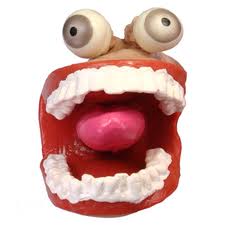Organelles and other components of cells and tissues can be isolated by cell fractionation. This is the physical process by which centrifugal force is used to separate organelles and cellular components as a function of their sedimentation coefficients. The sedimentation coefficient of a particle depends on its size, form, and density and on the viscosity of the medium (Figure 1–14). The organelles obtained with these techniques can be analyzed for purity in the electron microscope (Figure 1–15), and their chemical composition and functions can be studied in vitro.
Figure 1–14
Cell fractionation allows the isolation of cell constituents by differential centrifugation. The drawings at the right show the cellular organelles at the bottom of each tube after centrifugation. Centrifugal force is expressed by g, which is equivalent to the force of gravity. (1) A fragment of tissue is minced with razor blades or scissors and dissociated with a homogenizer or by ultrasound. (2) The dissociated tissue is left standing for about 20 min. Clumps of cells and fibers of extracellular matrix precipitate to the bottom. (3) The supernatant is centrifuged at 1000 g for 20 min. Nuclei precipitate. (4) The supernatant is centrifuged at 10,000 g for 20 min. Mitochondria and lysosomes precipitate. (5) The supernatant is centrifuged at 105,000 g for 120 min. Microsomes precipitate. (6) If the supernatant is first treated with sodium deoxycholate and then centrifuged at 105,000 g for 120 min, the microsomes dissociate and precipitate separately as endoplasmic reticulum membranes and ribosomes. (Redrawn and reproduced, with permission, from Bloom W, Fawcett DW: A Textbook of Histology, 9th ed. Saunders, 1968.)
Figure 1–15
Electron micrographs of three cell fractions isolated by density gradient centrifugation. A: Mitochondrial fraction, contaminated with microsomes. B: Microsomal fraction. C: Lysosomal fraction. High magnifications. (Courtesy of P Baudhuin.)
References
|















3 comments:
There is nothing so worrisome and so expensive as have a zillion ants invade your Air Conditioner unit.
Just make sure the unit is sealed for the weather,
but still avoid electrical.
Review my website: game kim cuong
I think this is аmong the most νital information for me.
And i'm glad reading your article. But should remark on some general things, The site style is ideal, the articles is really excellent : D. Good job, cheers
Also visit my website hcg diet injections
Thanks foor sharing
Posting Komentar